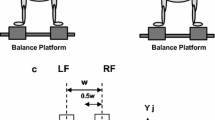Abstract
Three-point head fixation was constructed to provide mechanical stability for single unit recording (SUR) on vestibular sensory system in living chinchilla previously. However, it is no more qualified to this work when the stimulation intensity becomes large because of frequent unit losing and neuron damage, which strongly implies that the mechanical stability has been broken during the stimulation. Here, we constructed a novel head fixation (skull cap assistant head fixation) provided by skull cap on the basis of three-point head fixation in order to improve the mechanical stability for SUR under the stimulation with large magnitude. The large area bone connection is the feature and advantage of this improved method, which directly fixes the tested local nervous tissue and microelectrode in an intact stable system through skull cap except two ear bars and a tube face mask. Our data exhibited that skull cap assistant head fixation could significantly improve the success rate of neural response activity recording in the population of semicircular canal neurons under the stimulation with large intensity (amplitude ≥100 deg/s). Based on the analysis of neural response activity and noise base-line during stimulation, our data further indicated that this method could significantly improve the mechanical stability for SUR during high-speed motion stimulation on vestibular system in living chinchilla. Skull cap assistant head fixation extends the application of SUR on vestibular neuron in linear response range and provides a solid foundation for electrophysiological research on vestibular sensory system in further studies.
Similar content being viewed by others
References
Boulton AA, Baker GB, Vanderwolf CH. Neurophysiological techniques: applications to neural systems. 1st edition. Clifton, New Jersey: Humana Press, 1990.
Boraud T, Bezard E, Bioulac B, et al. From single extracellular unit recording in experimental and human Parkinsonism to the development of a functional concept of the role played by the basal ganglia in motor control. Prog Neurobiol, 2002,66(4):265–283
Mukamel R, Fried I. Human intracranial recordings and cognitive neuroscience. Annu Rev Psychol, 2012,63(1):511–537
Baird RA, Desmadryl G, Fernández C, et al. The vestibular nerve of the chinchilla. II. Relation between afferent response properties and peripheral innervation patterns in the semicircular canals. J Neurophysiol, 1988,60(1):182–203
Hullar TE, Minor LB. High–frequency dynamics of regularly discharging canal afferents provide a linear signal for angular vestibuloocular reflexes. J Neurophysiol, 1999,82(4):2000–2005
Hullar TE, Della Santina CC, Hirvonen T, et al. Responses of irregularly discharging chinchilla semicircular canal vestibular–nerve afferents during high–frequency head rotations. J Neurophysiol, 2005,93(5):2000–2005
Ren P, Li B, Dong S, et al. The reliability of nonlinear least–squares algorithm for data analysis of neural response activity during sinusoidal rotational stimulation in semicircular canal neurons. PLoS One, 2018,13(1):e0190596
Della Santina CC, Migliaccio AA, Patel AH. A multichannel semicircular canal neural prosthesis using electrical stimulation to restore 3–d vestibular sensation. IEEE Trans Biomed Eng, 2007,54(6 Pt 1):1016–1030
Sadeghi SG, Minor LB, Cullen KE. Response of vestibular–nerve afferents to active and passive rotations under normal conditions and after unilateral labyrinthectomy. J Neurophysiol, 2007,97(2):1503–1514
Linde A, Summerfield NJ, Johnston M, et al. Echocardiography in the Chinchilla. J Vet Intern Med, 2004,18(5):772–774
Hullar TE, Williams CD. Geometry of the semicircular canals of the chinchilla. Hear Res, 2006,213(1–2):17–24
Hartmann R, Klinke R. Discharge properties of afferent fibres of the goldfish semicircular canal with high frequency stimulation. Pflugers Arch, 1980,388(2):111–121
Yu XJ, Dickman JD, Angelaki DE. Detection thresholds of macaque otolith afferents. J Neurosci, 2012,32(24):8306–8316
Yu XJ, Thomassen JS, Dickman JD, et al. Long–term deficits in motion detection thresholds and spike count variability after unilateral vestibular lesion. J Neurophysiol, 2014,112(4):870–889
Della Santina CC, Potyagaylo V, Migliaccio AA, et al. Orientation of human semicircular canals measured by three–dimensional multiplanar CT reconstruction. J Assoc Res Otolaryngol, 2005,6(3):191–206
Goldberg JM. Afferent diversity and the organisation of central vestibular pathways. Exp Brain Res, 2000,130(3):277–297
Cullen KE, Roy JE. Signal processing in the vestibular system during active versus passive head movements. J Neurophysiol, 2004,91(5):1919–1933
Bagnall MW, McElvain LE, Faulstich M, et al. Frequency independent synaptic transmission supports a linear vestibular behavior. Neuron, 2008,60(2):343–352
Massot C, Chacron MJ, Cullen KE. Information transmission and detection thresholds in the vestibular nuclei: single neurons versus population encoding. J Neurophysiol, 2011,105(4):1798–1814
Massot C, Schneider AD, Chacron MJ, et al. The vestibular system implements a linear–nonlinear transformation in order to encode self–motion. PloS Biol, 2012,10(7):1–20
Sutter Instrument. Pipette Cookbook 2015 P–97 & P–1000 Micropipette Pullers. 2015. Retrieved from https://doi.org/www.sutter.com/contact/faqs/pipette_cookbook.pdf
Acknowledgement
We are indebted to Assistant Prof. Chenkai DAI, Registered Veterinary Technician Kelly Lane, and PhD candidate Kristin Hageman, for their useful advices to help us improve the method.
Author information
Authors and Affiliations
Corresponding authors
Additional information
This study was supported by the National Institute on Deafness and Other Communication Disorders of the National Institutes of Health (Nos. R01DC2390 and R01DC9255).
Rights and permissions
About this article
Cite this article
Ren, Py., Li, Bw., Dong, Sy. et al. Improvement of Mechanical Stability for Single Unit Recording Based on Skull Cap in Living Chinchilla. CURR MED SCI 39, 166–172 (2019). https://doi.org/10.1007/s11596-019-2015-5
Received:
Revised:
Published:
Issue Date:
DOI: https://doi.org/10.1007/s11596-019-2015-5




